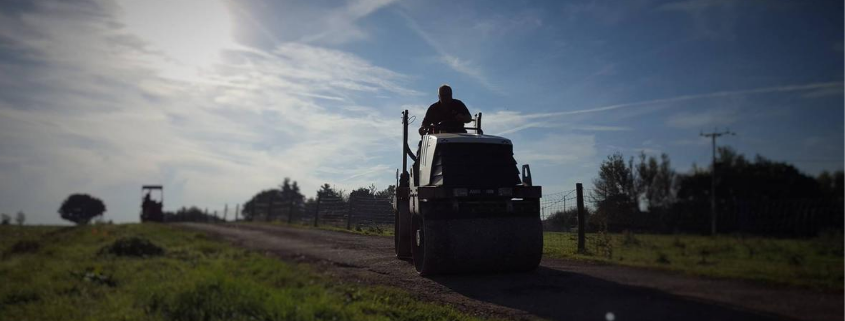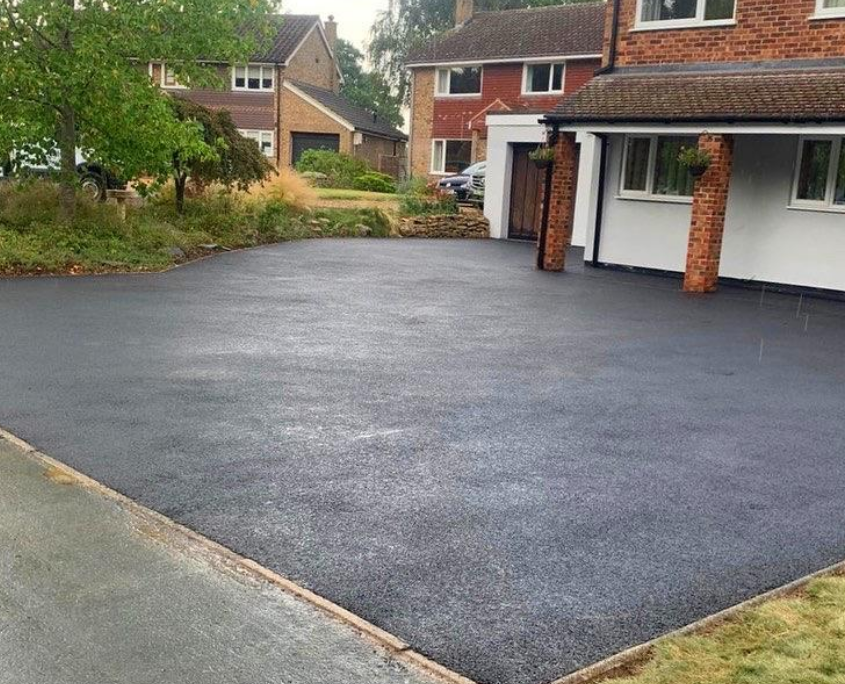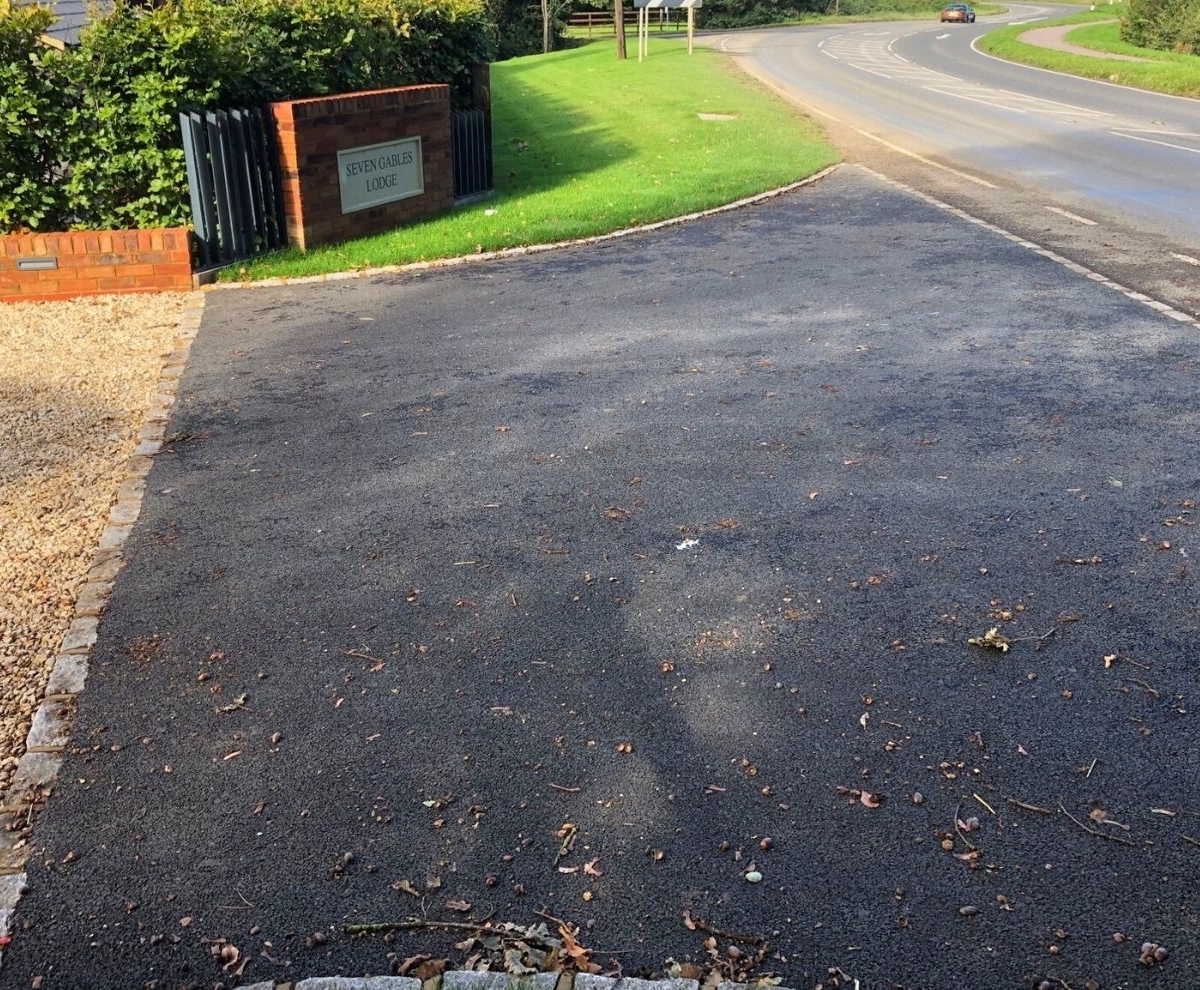FAQ Blog
Access Track – What Are My Options?
When you have a muddy, potholed access track, what are your surfacing options? In this blog we address the issues customers face when deciding how to improve their deteriorating access track. From commercial and farm access to domestic property access, the issues are often the same. Below we discuss three common fixes, with varying costs, to give you an idea on what would suit your situation.
The Quick Fix
The first option, described as a quick fix due to it being a non-permanent solution, is to fill existing potholes with a loose aggregate. It’s often the case that the customer has tried to fix these potholes by filling them with road planings. This is loose aggregate of various sizes which is a waste product from the removal of a road’s surface course asphalt. This material is cheap and so is appealing as a solution. The problem with road planings is that they have no binding material, or fines, that help the planings stick together and remain in the hole. You find that after a short time these potholes reappear and the planings are redistributed to lumps and bumps elsewhere. A better solution and only slightly more expensive is to fill these potholes with “MOT Type 1” aggregate. This material is usually used as a sub base material on roads and paths, but works better in this scenario to fill and remain in the potholes. Following compaction we can often overlay the whole track with another layer of Type 1.
This quick fix does the job of levelling the track, but will require more attention in the near future. It’s a cheap, and a perfectly good short term fix, but not particularly cost effective in the long run.
Asphalt / Tarmac Patch Repairs
A step up from filling potholes with MOT Type 1 is to patch repair the track using tarmac. Where a track is mainly solid, either mostly old tarmac with potholes or in some cases compacted planings, we can use tarmac / asphalt to fill any potholes. This is another quick fix solution, which is more expensive due to the increased cost of the material, but would last longer than using a loose aggregate to fix the problem. We would clear out any loose material from the holes and where possible in an asphalt or concrete track saw cut a neat area around the hole. This helps the new asphalt to stay in place. We’d then fill these holes with a binder or surface course asphalt and compact with a roller.
This is a slightly more permanent solution than the above and would probably last 2 or 3 times longer than the loose aggregate fix. However, with heavy loads and adverse weather conditions, this would also require repairing after a few years, and maybe as soon as 1 or 2 years from laying. Not a bad solution, and more cost effective than the Quick Fix, but not a permanent job.
Full Track Overlay
When it comes to a practical solution that’s a cost effective long term solution, properly preparing and overlaying the track with a decent layer of new asphalt is the only real way of ensuring a permanent fix. Most medium duty surfacing jobs, such as car parks or driveways, require at least 2 layers of asphalt which a lot of the time is more to do with aesthetics that structural requirement. For example, finishing your driveway with a large 20mm aggregate asphalt would look rough and unpleasing to the eye. However, when we’re looking for a cost effective way of surfacing a large area such as a long access track, it’s unnecessary to lay a binder course and a finer aggregate surface course. Quite often 1 thicker layer of a binder course asphalt, which is cheaper than a finer grade surface course, would be sufficient.
We would start by re-grading the track using an excavator / digger and removing any loose mud or foliage. We would then fill any potholes with the existing track material or MOT Type 1, and compact this to make a nice flat surface ready for the asphalt. Essentially carrying out the first “Quick Fix” as our preparation works. We could also regulate any potholes with the asphalt material where required. Next, where access allows, we would use a paving machine to lay between 60mm and 80mm of a new 14mm or 20mm asphalt surfacing to the track giving you a new solid and practical surface. The thickness depends on the requirements of the track, and the type of asphalt, either an AC (Asphalt Concrete) or SMA (Stone Mastic Asphalt) is chosen accordingly.
This is obviously the most expensive option which is mainly due to the amount of asphalt material required, but easily the most cost effective in the long run.
Whether it’s a quick fix or full surfacing depends on budget, and we never carry out works that don’t serve a purpose. We will discuss all options and give you prices to suit these. Some customers would rather pay yearly for a quick fix, others would rather be more economical and go for the full surfacing option. The choice is yours and we’re happy to help you chose what’s best for your project.
Mark Edwards
Surveyor, Edwards Surfacing








Leave a Reply
Want to join the discussion?Feel free to contribute!